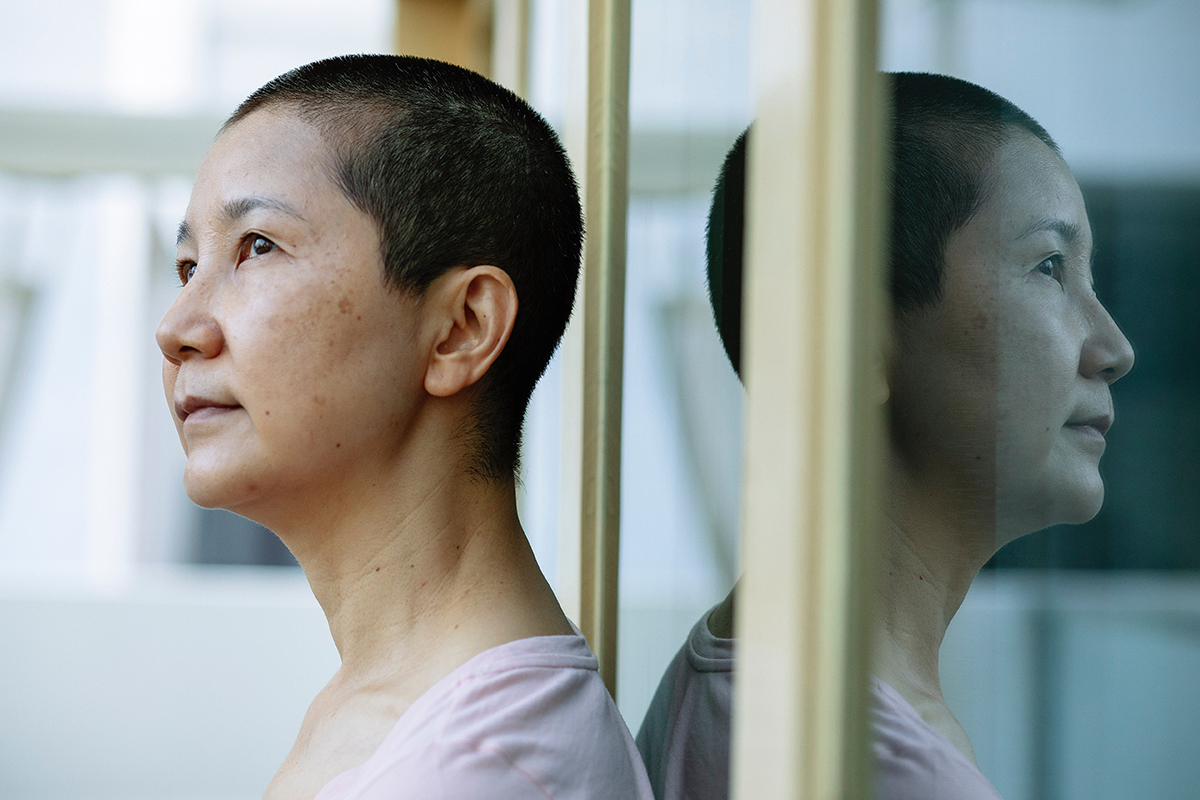Endometriosis and endometrial cancer are often confused because the names of these two conditions sound so much alike. In fact, they are very different. Endometriosis is not cancer, and having endometriosis does not necessarily lead to endometrial cancer. Endometriosis can be very painful, but it is not lethal.
What these two conditions do have in common is that both affect the tissue that forms the inner lining of the uterus, the endometrium. Endometriosis occurs when tissue that is similar to the endometrium grows outside of the uterus. Endometrial cancer is a malignant tumor that develops from the endometrial lining inside the uterus. Endometrial cancer is a type of uterine cancer.
How common are endometriosis and endometrial cancer?
Endometriosis is a common gynecologic problem. It affects about 10% of American women between the ages of 15 and 44—more than 6 million in total. It occurs most often among women in their 30s and 40s.
Far fewer women develop endometrial cancer, yet it is the most common gynecologic cancer. Each year about 66,000 new cases are diagnosed in the U.S., and some 600,000 Americans are living with endometrial cancer. The average age at diagnosis is 60. Endometrial cancer is rare among women younger than 45.
Endometrial cancer is more common in Black women than white women. On average, Black women are diagnosed at a more advanced stage of endometrial cancer than white women and are more likely to die from it.
Symptoms
Endometriosis and endometrial cancer may share symptoms such as unusual vaginal bleeding or spotting. But they typically happen at different times of life—at childbearing age for endometriosis and after menopause for most cases of endometrial cancer. Some people with endometriosis or endometrial cancer have no symptoms. Symptoms that may be associated with these conditions are:
Endometriosis Symptoms
- Very painful menstrual cramps that may worsen over time
- Pain in the lower back and pelvis
- Heavy periods
- Pain during or after sex
- Painful bowel movements, usually during your period
- Difficulty becoming pregnant (infertility)
- Bleeding or spotting in between periods
- Digestive symptoms like diarrhea or constipation
Endometrial Cancer Symptoms
- Bleeding or spotting after menopause
- Before menopause, unusual vaginal bleeding or bleeding between periods
- Pelvic pain
- Painful urination
Diagnosis
If you experience any of the symptoms above, discuss them with your doctor right away. The doctor will also ask about your medical history and perform a physical exam, including a pelvic exam. Next you may have an ultrasound imaging test to get a picture of the abdomen. The ultrasound might be done with a wand that is drawn across the skin of the belly, or with a probe that is inserted into the vagina (transvaginal ultrasound), to check the thickness of the endometrium and look for tumors.
The next steps in diagnosis are different for endometriosis and endometrial cancer.
Diagnosing Endometriosis
A surgical procedure to obtain tissue for analysis is the only way to definitively diagnose endometriosis. This is most commonly done using laparoscope—a long thin tube with a camera on the end—to view the uterus and pelvis through a small incision in the abdomen. A sample of cells may be taken during surgery to evaluate for endometriosis.
Diagnosing Endometrial Cancer
If imaging tests or symptoms suggest signs of cancer, a sample of tissue will be collected for diagnosis. The doctor inserts a speculum in the vagina, and then passes a thin tube into the uterus to obtain tissue from the endometrium by suction. In the lab, a pathologist examines the tissue under a microscope to diagnose or rule out cancer. Additional tissue samples may be needed for a diagnosis, as well as further tests to provide more information about a cancer.
Treatment
Endometriosis and endometrial cancer are treated differently, and the goals of treatment also vary for the two conditions. For endometriosis, treatments help manage symptoms and can address infertility.
Endometrial cancer is commonly treated with a combination of surgery and other therapies.
Endometriosis treatment options
- Pain relievers, including over-the-counter ibuprofen and other nonsteroidal anti-inflammatory drugs (NSAIDS) as well as prescription medications.
- Hormone therapies can reduce the build-up of endometrial tissue during the menstrual cycle. These include birth control pills and other hormonal contraceptives, progestin therapy, and gonadotropin-releasing hormone (GnRH) agonists.
- Surgery is usually indicated for severe symptoms or infertility. The most common procedure is laparoscopy, during which the surgeon inserts tools into the abdomen through small incisions and removes or destroys patches of endometrial tissue growing outside the uterus.
Talk with your doctor about the treatment that is right for you.
Endometrial cancer treatment
Endometrial cancer treatment involves a combination of therapies taking into consideration the stage and type of the cancer, and a patient’s overall health. Treatment options may be as follows:
- Surgery is often the first treatment for endometrial cancer. In a procedure called a total hysterectomy, the surgeon removes the uterus and cervix. The surgeon may also remove the fallopian tubes, ovaries, and one or more lymph nodes. This may be done through an incision in the abdomen or through minimally invasive surgery (laparoscopic or robotic surgery).
- Radiation therapy is recommended in some cases to reduce the risk of recurrence after surgery. Radiation can be delivered from outside the body, with a machine like an X-ray machine, or by using an insert placed in the vagina.
- Chemotherapy uses drugs to kill cancer cells and shrink tumors. It is sometimes given before surgery, but most often is given after surgery. Chemotherapy drugs can be given by mouth or intravenously.
- Hormone therapy may be used to treat cancer without requiring hysterectomy in people who wish to preserve their fertility or in some cases where surgery is not possible.
- Immunotherapy boosts the ability of the body’s immune system to fight cancer. This has been very effective in treating endometrial cancer.
- Targeted drug therapies home in on specific features of cancer cells to halt their growth.
Can endometriosis turn into cancer?
People with endometriosis have a slightly higher risk of some cancers, which are rare, called epithelial ovarian cancers.
Endometriosis and ovarian cancer
Recent research has found a genetic link between endometriosis and certain rare ovarian cancers, known as epithelial ovarian cancers (EOCs). Some women have genetic changes, or markers, that predispose them to endometriosis. Scientists have found that individuals with these markers may also have a higher risk of certain subtypes of EOCs:
- Clear cell ovarian cancer, which accounts for 5 to 10 percent of all ovarian cancers
- Endometrioid ovarian cancer, which—despite the similar name—is not endometrial cancer and is much rarer. It accounts for 10 to 15 percent of EOCs.
Understanding the genetic connections between endometriosis and EOCs can guide research on new therapies for both.
Endometrial Cancer Support
Receiving a gynecologic cancer diagnosis can be overwhelming, but OCRA is here to help patients and their families every step of the way. We offer several options for support, including:
- Staying Connected, OCRA’s virtual support series for gynecologic cancer patients, survivors and their families. These groups are themed around a variety of topics and facilitated by an oncology social worker.
- Woman to Woman, which connects you with a survivor volunteer for peer support
- Inspire Online Community, a safe environment for conversations and insight
- Clinical Trial Finder, where you can be connected to clinical trials specific to your diagnosis


